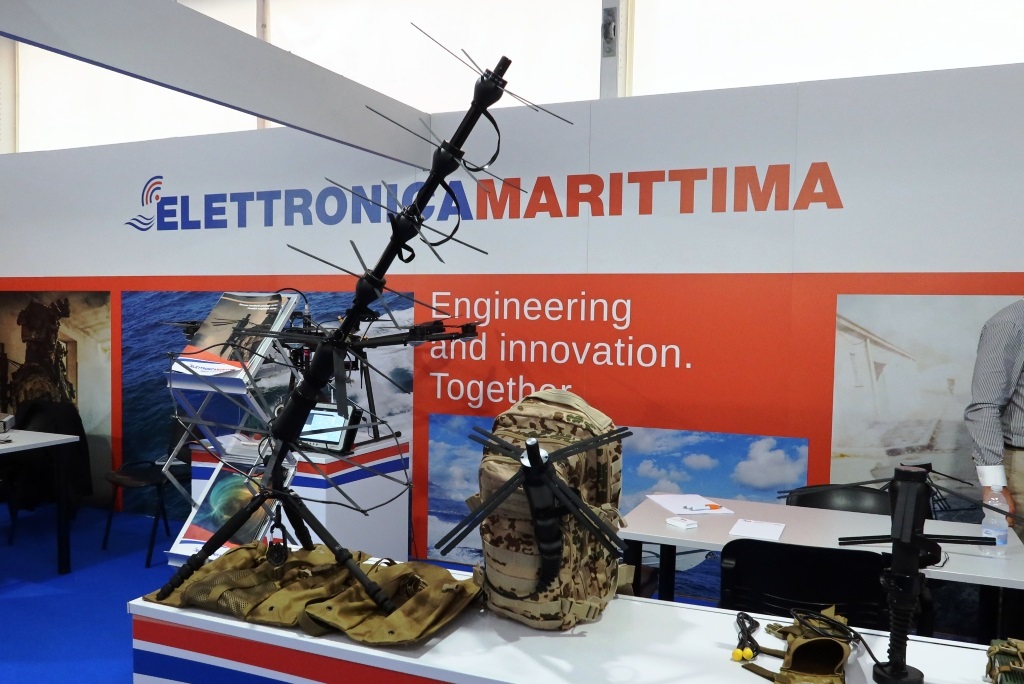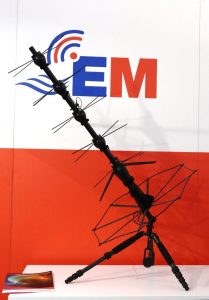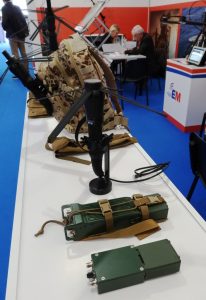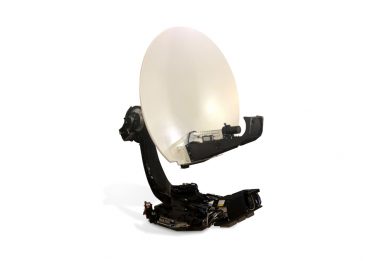
SeaFuture 2023 – Elettronica Marittima promotes its military products on the international market
Founded in 1977 aiming at designing and installing navigation and communication maritime system, Elettronica Marittima has evolved and is currently specialised in antennas and amplifiers for military use, working mostly with Italian military and law enforcement agencies as well as with Special Forces. At SeaFuture 2023 the company takes part for the first time in an international defence exhibition, promoting its range of military products on the international market
Based near Ferrara, on Italy’s north-Adriatic coast, Elettronica Marittima is an SME that has developed in recent times a whole range of products dedicated to military and law enforcement use. Its range of products includes antennas and mounting, amplifiers, command and control systems, navigation systems, automatic police reports systems, field measurement systems and software.
At SeaFuture 2023 Elettronica Marittima exhibits a good part of its Special Forces catalogue, which includes a number of antennas and amplifiers aimed at improving existing radio performances minimising weight penalty.
The smallest member of the 8P-series SATCOM antennas is definitely the H.H. SATCOM Antenna Mod. EVO-A-SAT 8P RRAO, the latter being the acronym of the Italian Army 185th parachute Reconnaissance and Target Acquisition Regiment with which the company developed the antenna. A number of antennas evolved from that, one for Navy SFs, one designed to fit directional elements.
The most flexible one is the Modular Omidirectional, Directive SATCOM Antenna Mod. EVO-A-SAT 8P-MODì; in its baseline configuration it is similar to the 8P RRAO-X omnidirectional antenna, which operates in the 230-400 MHz band, its radiant elements being made in a memory-form material that deploy in minimal time by just pulling down a ring that keeps them along the antenna body while not in use. The pin fitted on the top of the antenna allows adding one or more EVO-A-SAT 8P-ABR bi-directive modules, which increase gain. Usually these are fitted after connecting the antenna to the Mod. EVO-A-SAT 8P-ABR that is made of a tripod and an umbrella-shaped reflective element, which spokes are also made in memory-form material.
Modularity allows operators to use the 8P-MODì in the hand-held configuration when time is the operational priority, unfolding it in less than 3 seconds, pointing it in the satellite general direction and going live in voice or data. When a better signal quality is required, adds-on are fitted, the full antenna system being set up in 30-40 seconds.
All 8P-serie antennas have circular polarisation, 50 Ohm impedance, a Standing Wave Ratio of less than 2:1, electronic circuits protecting the radio interface from excess of VSWR. Maximum gain is not provided by the company. According to Elettronica Marittima the use of the reflective module increases gain by a factor of 3 dB, which is further increased by a factor of 1,5 dB adding a first bi-directive module, this overall configuration being lighter than equivalent antennas.

The main antenna element is 235 mm long and its diameter is less than 75 mm with radiant elements folded, weight being less than 500 grams. With the reflective element and two bi-directive elements the antenna weight increases to 1.432 kg, the reflective element weighting 540 grams while each bi-directional module weights 446. The tripod, including the magnetic compass used to aim the antenna in the satellite direction, weighs 787 grams.
The whole system is carried in the Mod. EVO-A-MODÌBag available in black and coyote tan colours; the first compartment being reserved for the antenna, the second and third for the basement and the reflective element, and the final two each one for a bi-directive element.
The aforementioned antennas are in service with Italian Special Forces units, fitted to hand-held Software Defined Radios such as the L3Harris Falcon III AN/PRC-152A or Thales AN/PRC-148.

Increasing the range to existing radio adding minimal size and weight penalty can also be done attaching an amplifier to the radio set. Following the requirements of the Italian Army Ranger unit, the 4th Alpini Parachute Regiment, Elettronica Marittima developed a lightweight portable wideband amplifier, the MOD-EVO-A-ALPIPAR, which enhances the performances of Software Defined VHF radios in the entire 30-512 MHz band. The output power can be selected between 12.5 W or 20 W thanks to a switch, while a 20 dB Low Noise amplifier allows increasing the received signal. To avoid damages the amplifier RF section can cope with a 65:1 Standing Wave Ratio should it be used with damaged or mismatched antennas,. Power is provided by a battery, power consumption when transmitting being lower than 70 W when set on 20 W output power and 45 W when set on 12.5 W, while in reception mode power consumtion is lowe than 3.3 W in SATCOM mode and 2.7 W in line-of-sight mode. The amplifier is compatible with the most common ones in the military inventory such as the 12041-2400-0X Tactical Radio Battery or the ELI-152 use on PRC-152 / PRC-163 radios. A second battery can be added if extended time operations are forecasted, hot swap allowing continuous operation when the first battery is low. Without battery the amplifier weighs 820 grams, and for dismounted operations a purposely-designed MOLLE pouch hosting the amplifier and the battery is available. The MOD-EVO-A-ALPIPAR is 170 mm long, 82 mm wide and 54 mm deep. Elettronica Marittima developed a series of accessories that allow its use in a vehicle, power being then provided by the platform electric system through a portable DC/DC box.
Photos by P. Valpolini



